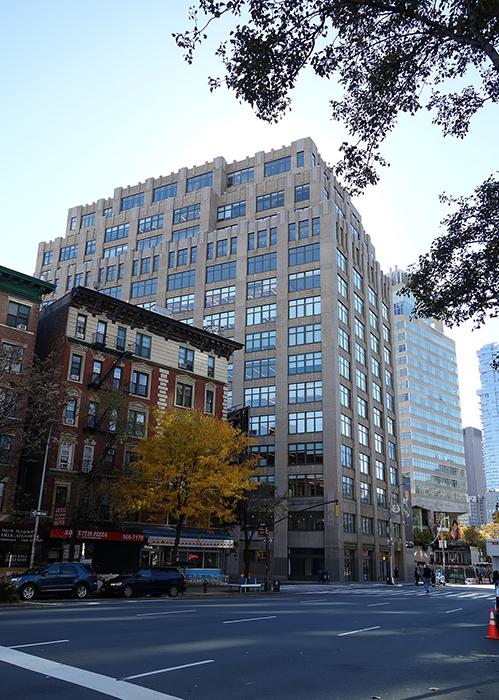
100 Avenue of the Americas, Zero Carbon Playbook
A case study in retrofitting an aging commercial building in New York City with HVAC systems that meet carbon emission reduction goals.
overview
Built in 1930, the 17-story masonry building at 100 Avenue of the Americas in SoHo, Manhattan, had an uninsulated façade, double-pane windows and inefficient HVAC systems. These features made it an ideal candidate for a 2020 study commissioned by the New York State Energy Research and Development Authority (NYSERDA). The study explored how best to implement electric-powered heating and cooling systems in New York City’s commercial buildings in line with the 80x50 goal to reduce carbon emissions 80% by 2050.
Using 100 Avenue of the Americas as a prototype, we collaborated with Hines Development and a team that included urbs engineers, van Zelm Engineers, New Buildings Institute and Hunter Roberts Construction Group to demonstrate how it is possible to retrofit an aging commercial building to use almost no energy for heating at minimal first cost, all without touching the façade.
highlights
- Our approach centered around reducing the demand for heating and cooling; re-using the heat that is generated by occupants, computers and lights to provide part of the heating needs of the building; and meeting any remaining needs with very efficient equipment powered with clean electrical energy.
- The team developed six different HVAC schemes—three for whole building renovations and three for single-floor renovations.
- The results were published in a publicly available ‘Playbook’ through NYSERDA in late 2021. The public information also includes interactive websites documenting the first cost, potential payback and constructability/marketability of a range of deep energy renovations.
- The study demonstrated that meeting the targets of NYC 80X50 and exceeding the requirements of Local Law 997 (LL97) is possible for the same cost as code compliant retrofits, without touching the building envelope.










